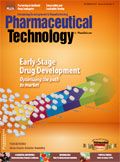Weighing Access and Affordability
Policymakers must balance fundamental issues involving access to medicines and pricing.
The late Dr. Louis Lasagna, visionary father of the field of clinical pharmacology and founder of the Tufts University Center for the Study of Drug Development (CSDD), used to refer to the "cruel irony" of developing life-saving, breakthrough drugs that patients cannot afford. In many respects, this conundrum is playing itself out across many major pharmaceutical markets around the world.
Open markets, which allow for more flexible pricing strategies, offer a significant incentive to drug companies to seek approval in that region, thereby leading to a greater number of medicines reaching the marketplace despite the fact that some of these medicines may be unaffordable to some patients. At the other extreme, closed markets, which more closely regulate pharmaceutical prices and reimbursement, may lead to fewer new medicines reaching the marketplace. Those products, however, may be more affordably priced and, therefore, accessible to a greater number of patients.
The basic question for healthcare strategists and policymakers is the following: Do you want more drugs, knowing that some patients who need them may not be able to afford them, or do you want fewer drugs, which are affordable to all?
To explore this issue, Tufts CSDD conducted a study that looked at access to cancer drugs in the United States and the European Union and reviewed pricing and reimbursement restrictions in each region. The findings of the study, which was led by a co-author of this article, Joshua Cohen, were published in a recent issue of Tufts CSDD Impact Report (1).
Briefly, the study found that in the past decade, FDA approved more cancer drugs than its European counterpart, EMA, and for those drugs approved in both markets, FDA approved them more quickly. Moreover, third-party payers in the US, both private and public, approved a larger percentage of marketed drugs for reimbursement, but with a much higher patient-cost sharing than in Europe. In contrast, whereas fewer cancer drugs were approved in Europe, the prices of those drugs were, on average, 9% lower than in the US.
Although the study did not assess whether better access to the newest cancer drugs led to better health outcomes, the results highlight a key challenge for policy makers. Given that the annual tally of relatively expensive new cancer drugs is increasing, reimbursement will continue to be a significant concern in all healthcare systems. In this regard, policymakers may be well served by cautiously drawing lessons from the experiences, both positive and negative, of systems that have integrated economic evaluations into the prescribing and reimbursement decision-making process.
Of course, this conclusion begs the questions: Why were more new cancer drugs approved in the US than in Europe, and among the 29 drugs common to both regions, why were all of them approved and marketed first in the US? The answer is that approvals are, in part, a function of both regulatory policy (e.g., access to priority review and accelerated approval procedures) as well as institutional features, such as whether an environment is more conducive to the marketing of products. The US has fewer price controls and has less institutionalization of cost-effectiveness assessments as a possible barrier to market access. Consequently, pharmaceutical companies are more likely to seek approval and market their products first in the US.
If the following policy goal is presupposed—that is, to maximize aggregate health outcomes subject to a budget constraint—then the European scenario of granting less access to medicines deemed to offer less value (i.e., less cost-effective) may make sense. This scenario, however, is a societal or payer perspective and may not represent the best interests of individual patients, who are unlikely to care much about average, aggregated data. To them, having more immediate access offers hope, a chance at an extension of life, or an improvement in quality of life.
There may be a trade-off between access and pricing: greater access at the expense of higher, possibly unaffordable prices to patients. It's a "cruel irony."
Kenneth I. Kaitin, PhD, is professor and director, and Joshua P. Cohen, PhD, is assistant professor, both at the Tufts Center for the Study of Drug Development, Tufts School of Medicine, Kenneth.Kaitin@tufts.edu
Reference
1. K.I. Kaitin, Ed., "US Offers Patients Faster, Greater Access to Cancer Drugs than Europe," Tufts CSDD Impact Report 14 (4), 1–4 (2012).

Pharmaceutical Tariffs Are Imminent: How Industry is Bracing for Impact
April 16th 2025On April 14, 2025, the Trump Administration launched a national security-driven investigation into pharmaceuticals, a move that will likely result in tariffs being placed on pharmaceutical drugs, ingredients, and other components that are imported from outside of the United States.
Drug Solutions Podcast: A Closer Look at mRNA in Oncology and Vaccines
April 30th 2024In this episode fo the Drug Solutions Podcast, etherna’s vice-president of Technology and Innovation, Stefaan De Koker, discusses the merits and challenges of using mRNA as the foundation for therapeutics in oncology as well as for vaccines.